How to grow Centaurea
Centaurea is a large genus of annuals, biennials, perennials, and subshrubs in the daisy family, occurring in a range of habitats across the world. In the UK, gardeners are likely to be familiar with three or four key species. There’s the cornflower (Centaurea cyanus) – a powder blue, annual wildflower which was once a weed in corn fields (hence the common name) and is now a popular inclusion in wildflower seed mixes – both the straight species and cultivated forms. Flowering a little later are the thistle-like knapweeds – native wildflowers found in meadows, grassland, and along roadside verges. Common knapweed (C. nigra) is vigorous and widespread, while greater knapweed (C. scabiosa) favours chalky soils and is more of a rarity. Finally, the one which tends to be known simply as centaurea, (C. montana) is a widely grown garden plant of which there are many different cultivars. It is a staple of cottage gardens, valued for its ease of growth and long flowering period. You may also sometimes hear it referred to as perennial cornflower.
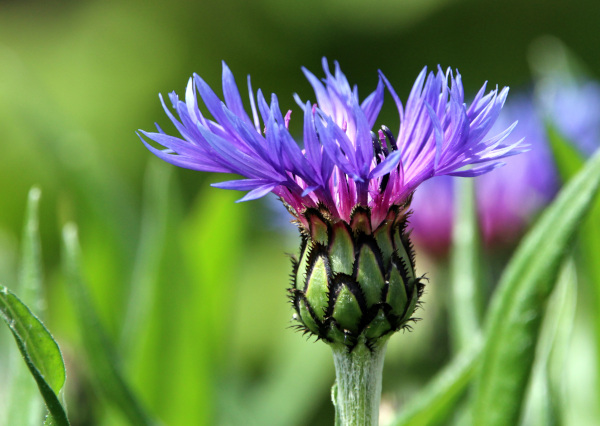
Key Information
Position
Soil Conditions
Hardiness

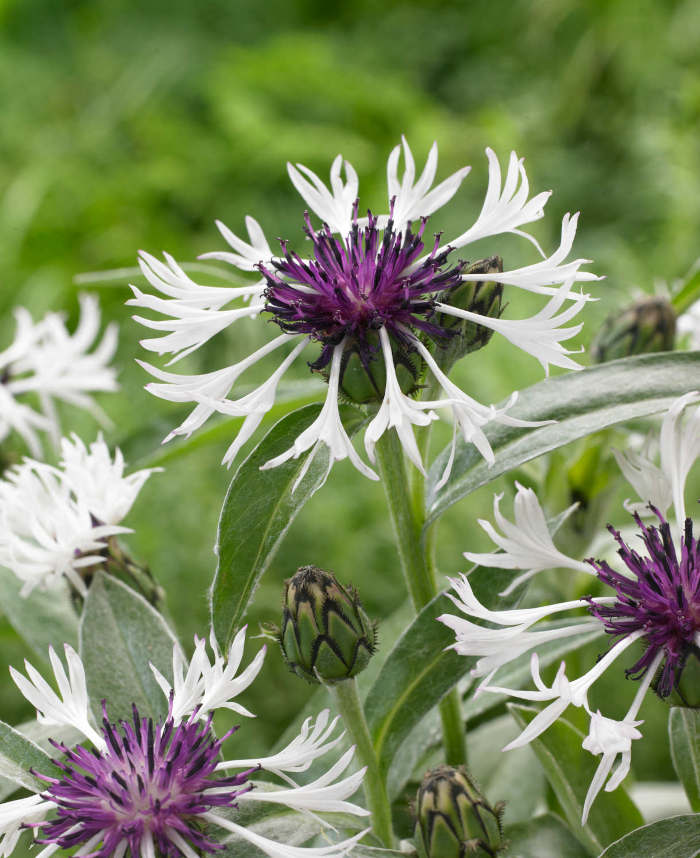
Where & when to plant Centaurea
Position- C. montana grows in full sun or partial shade, whereas the wildflower species prefer full sun.
Soil- C. montana requires moist but well-drained soil.
The wildflower species are more drought tolerant.
Flowering Period- C. cyanus (cornflower) and C. montana (centaurea): late spring to midsummer
C. nigra (common knapweed) and C. scabiosa (greater knapweed): summer
Hardiness- Varies depending on the species and cultivar.
Those mentioned in this growing guide are all very hardy. There are also a handful of more borderline, obscure species.
For best results, plant perennial species (C. montana and the knapweeds) in autumn or spring. An autumn planting can be done by those gardening in mild conditions (and broadly speaking, this is the southern half of the UK). For those liable to cold winters, it is best to wait until spring (generally the northern half of the UK). Planting can also be carried out in summer, though be prepared to water regularly.
Use C. montana towards the front of a border or as ground cover in a sunny or partially shaded spot. The knapweeds are useful for wildlife gardens, wildflower meadows, or informal cottage garden borders.
The annual cornflower (C. cyanus) is best planted in spring, and is ideal for wildflower meadows, cutting gardens, or for gap filling in a border.
All centaurea species can also be grown successfully in a container, though it is best to go for shorter varieties as taller ones are likely to flop over without support.
How to plant Centaurea
- For planting in the garden, dig the soil area removing any large stones and weeds and breaking up any lumps. Rake level and firm with your heels. Rake level again. Ignore this stage if you’re planting into a grassy meadow.
- Water plants well and allow to drain before planting.
- Dig a hole twice the size of the root-ball, or if you’re planting into a meadow, simply remove a plug of turf roughly the same size as the root ball.
- Place the plant in the hole, ensuring the top of the root ball sits level with the surface of the soil. Too low and the plant may rot, too high and the roots can dry out.
- Backfill with soil and firm in gently with your foot.
- Soak well with water.
- For planting in containers, first choose a pot with plenty of drainage holes in the bottom. You might wish to grow your centaurea on its own (in which case go for a pot just a few centimetres larger than the rootball), or as part of a mixed display. The latter is a good move when it comes to annual cornflowers, as these have a relatively short flowering period (10-12 weeks) compared to other summer-flowering annuals.
- Use a good quality potting compost with a handful or two of horticultural grit mixed in, and, if not already present in the compost (check the description on the bag) some slow-release fertiliser granules.
- Start by partially filling the pot with compost; enough so that when placed on it the upper surface of the root ball is about 3cm lower than the top of the pot.
- Infill all the space surrounding the root ball with compost, firming down with your fingers then adding a little more so the plant is held tight.
- Pick up the container and lightly tap on the potting bench or ground a few times to help further settle the compost around the plant.
- Soak well with water.
- A mulch with horticultural grit will look attractive and help to prevent a ‘cap’ or crust forming on the top of the compost (something container plants can suffer due to the artificial nature of their watering).

What to plant with Centaurea
For a beautiful and pollinator-friendly wildflower meadow, combine annual cornflowers with companions such as poppies, ox-eye daisies, and corn marigolds. All these and more can be found in our Mini Meadow Empathy seed mix.
Use the knapweeds to create a bee and butterfly haven, alongside other nectar-rich companions such as buddleja, Verbena bonariensis, sedum, knautia, and eupatorium.
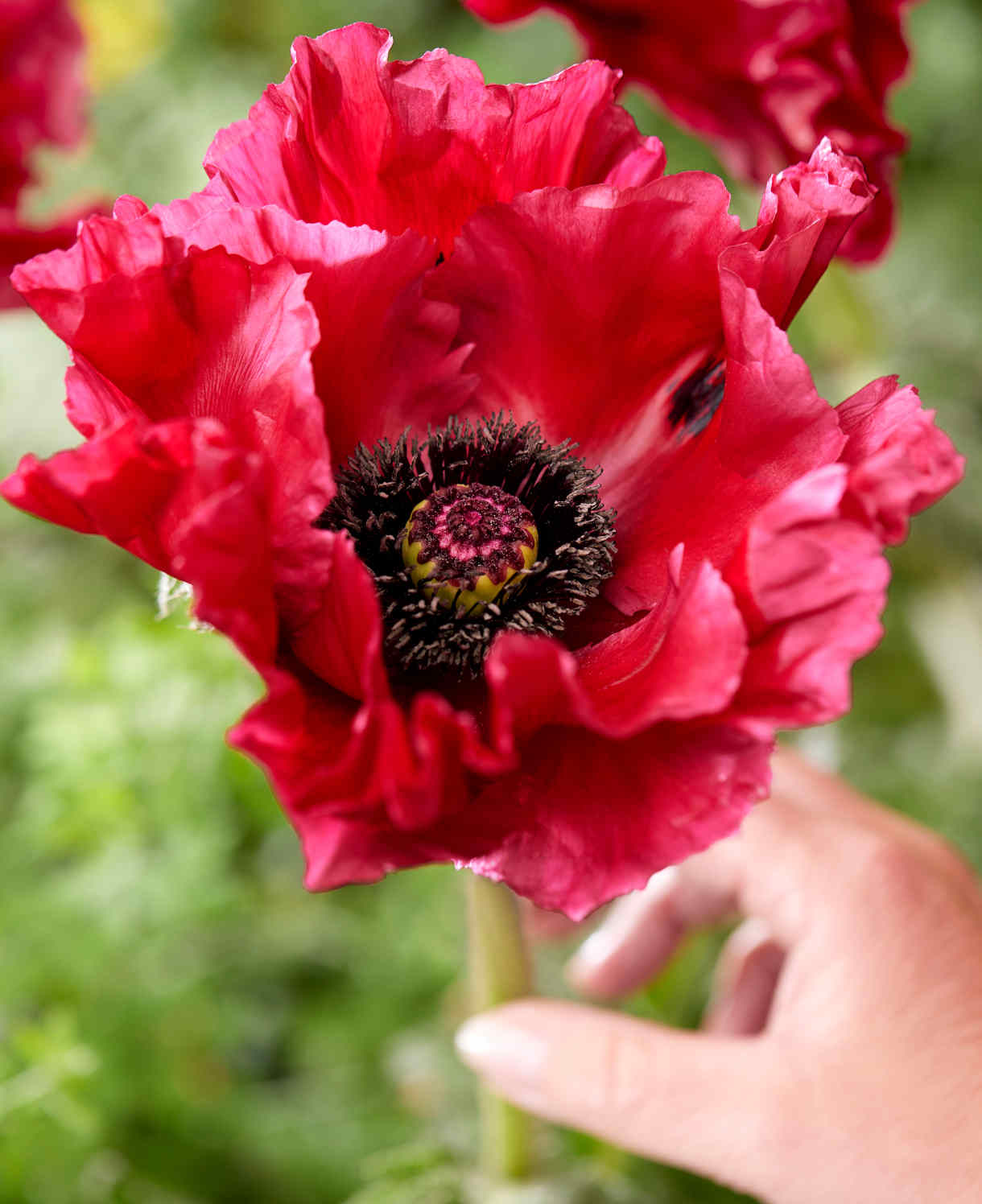
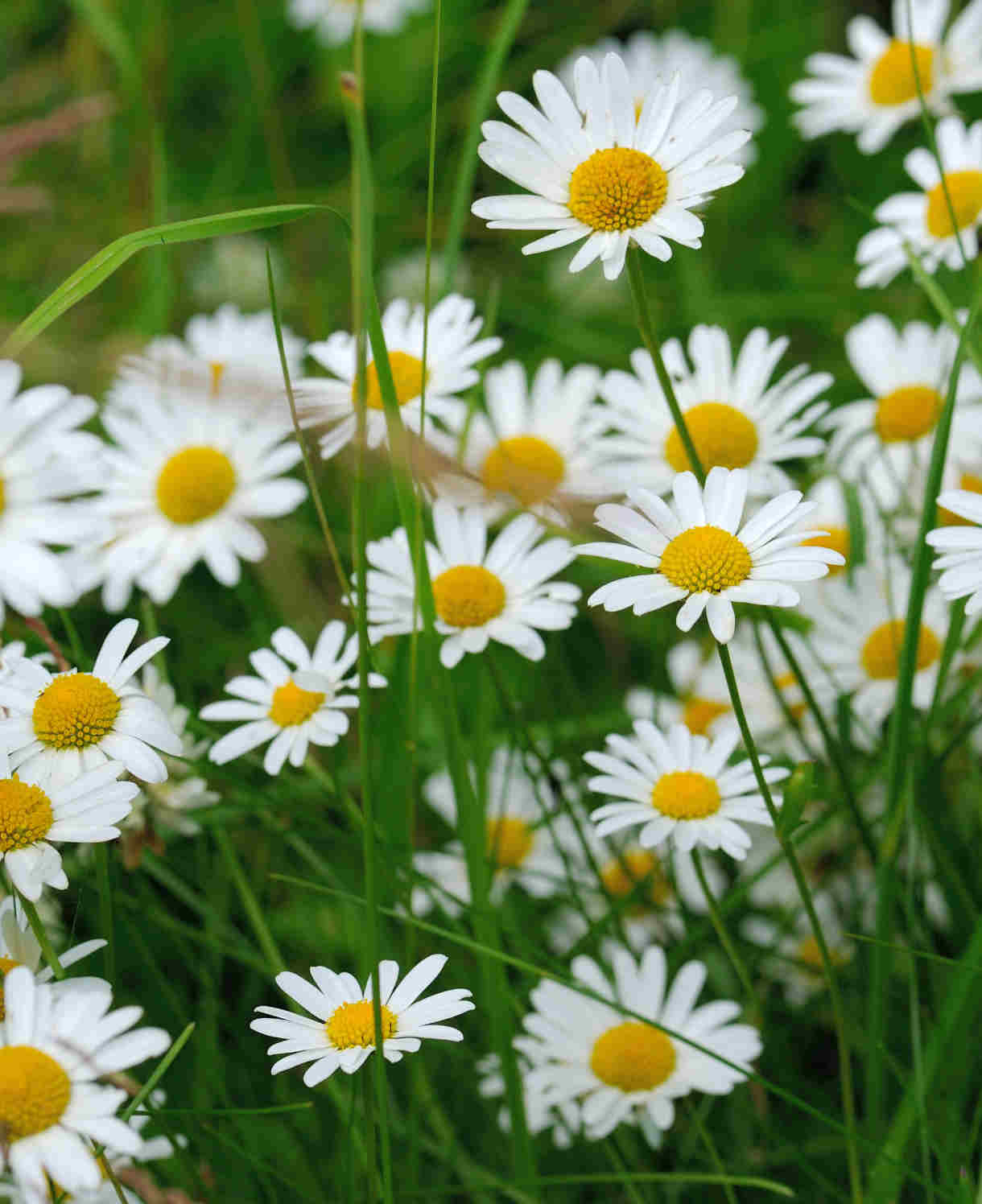
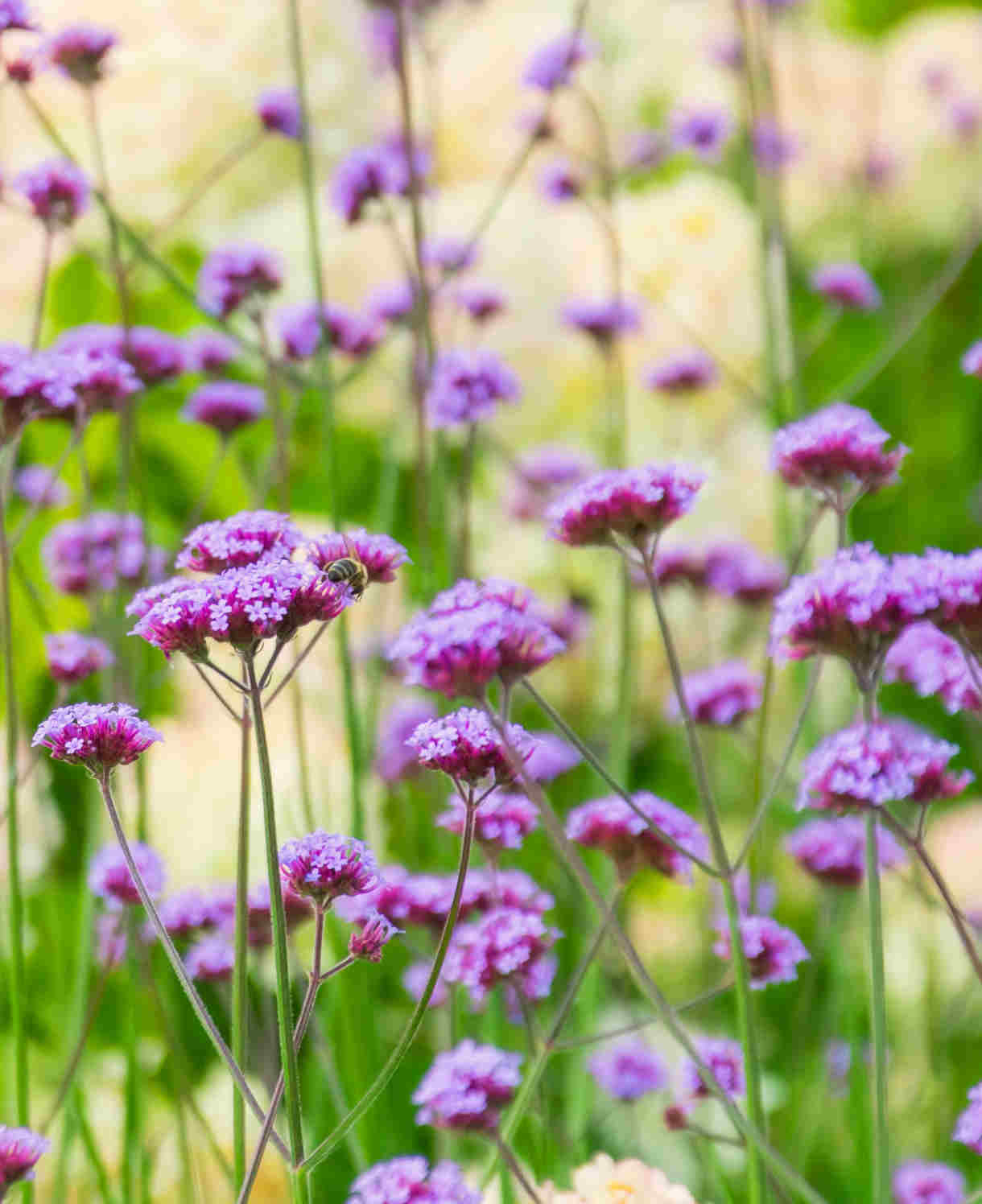
How to care for Centaurea
Pruning and Deadheading
Deadhead faded flowers to encourage further blooms and prevent self-seeding if necessary.
At the end of the flowering period, remove annual species to the compost heap and cut perennial species back hard. Spare a few plants this treatment if you can, leaving them intact for goldfinches to feast on the seedheads.
Watering
Centaurea has fairly standard watering needs. Grown in the ground, it needs a good watering in on planting and a couple more times after this, then should be self-sufficient in all but prolonged spells of hot, dry weather. C. montana prefers not to dry out too much, whereas the wildflower species can cope with a little more drought.
Centaurea in a container requires regular watering throughout the growing season. To avoid overdoing it, a good rule of thumb is to allow the top couple of centimetres to dry out between soakings. To check this, wiggle your finger down into the compost until you feel moisture. Be aware that in the height of summer containers may need watering every day, especially smaller or densely planted ones.
Feeding
Centaurea is not a hungry plant and on healthy, fertile soil shouldn’t require feeding to perform well. Having said this, C. montana will benefit from an annual mulch, not least to lock moisture into the soil. This means applying a layer of well-rotted organic matter (i.e., leaf mould, manure, or garden compost) to the surface of the soil around the base of the plant. Do this when planting, and then again every year in autumn or spring.
Container-grown plants are different as they rely solely on the gardener for nutrition. Get off to a flying start by making sure you use a good quality compost with slow-release granules mixed in. These generally provide nutrients for around 6 to 8 weeks, after which a liquid feed every 4 weeks until the end of the growing season will ensure a healthy, thriving display.
Cold Protection
While there are some borderline species of centaurea, all of ours are hardy and able to make it through a UK winter without the need for additional protection.
Pests and Diseases
Centaurea is largely problem-free, though can occasionally succumb to powdery mildew. This is a fungal disease which appears as a white, powder-like coating on foliage and is generally a sign that a plant is stressed – often through the extremes of drought or excessive water, though other causes can include poor airflow, over fertilizing, and insufficient sunlight.
Prune off and dispose of any affected leaves and if necessary, thin out surrounding plants to improve airflow and light levels. Do not be tempted to give the plant extra feed, as this will generate an excess of soft, new growth which is particularly susceptible to the fungus.
How to propagate Centaurea
Centaurea spreads readily via seed, and therefore leaving seedheads intact to disperse naturally is an easy way to maintain their presence in an area. It is worth noting, however, that centaurea is a very promiscuous plant and named cultivars are unlikely to come true from seed. To produce identical plants to the parent, perennial species can be divided in autumn or spring.
- Choose a day when the soil is not frozen or waterlogged.
- Dig the plant out of the ground.
- Shake off any excess soil.
- Separate the plant into sections using either swift, cutting blows with a sharp spade, or two forks inserted back-to-back with tines touching, handles then pushed together to prise the plant apart.
- Discard old, damaged, or surplus pieces, keeping healthy, vigorous material.
- Replant decent-sized pieces where desired, and any smaller bits can be potted up.
- Water well until fully established.
* Many plants carry Plant Breeders Rights and cannot be propagated for commercial purposes.
Common Centaurea questions
Do cornflowers come back every year/ is centaurea a perennial?
Annual cornflowers ( cyanus) are annuals, meaning they don’t come back the following year. However, given the right circumstances (i.e., seedheads left intact, and resulting seedlings left undisturbed), they will often self-sow to produce new plants in the same area.
Other species – C. montana and the knapweeds – are perennial, meaning they die back for winter and regrow the following spring.
Do cornflowers need full sun?
Yes, annual cornflowers are sun-lovers which need plenty of direct light to thrive. For a partially shaded spot, try perennial species montana and its cultivars.
Are cornflowers UK native?
Originally, no, however this species became naturalised in the British Isles having been introduced from mainland Europe during the Iron Age. For a long time, it was an extremely common sight across arable fields (to the point of being considered a weed), however pesticide use has all but eradicated it. Thankfully it remains popular among gardeners and is often included in wildflower meadows and mixes.




